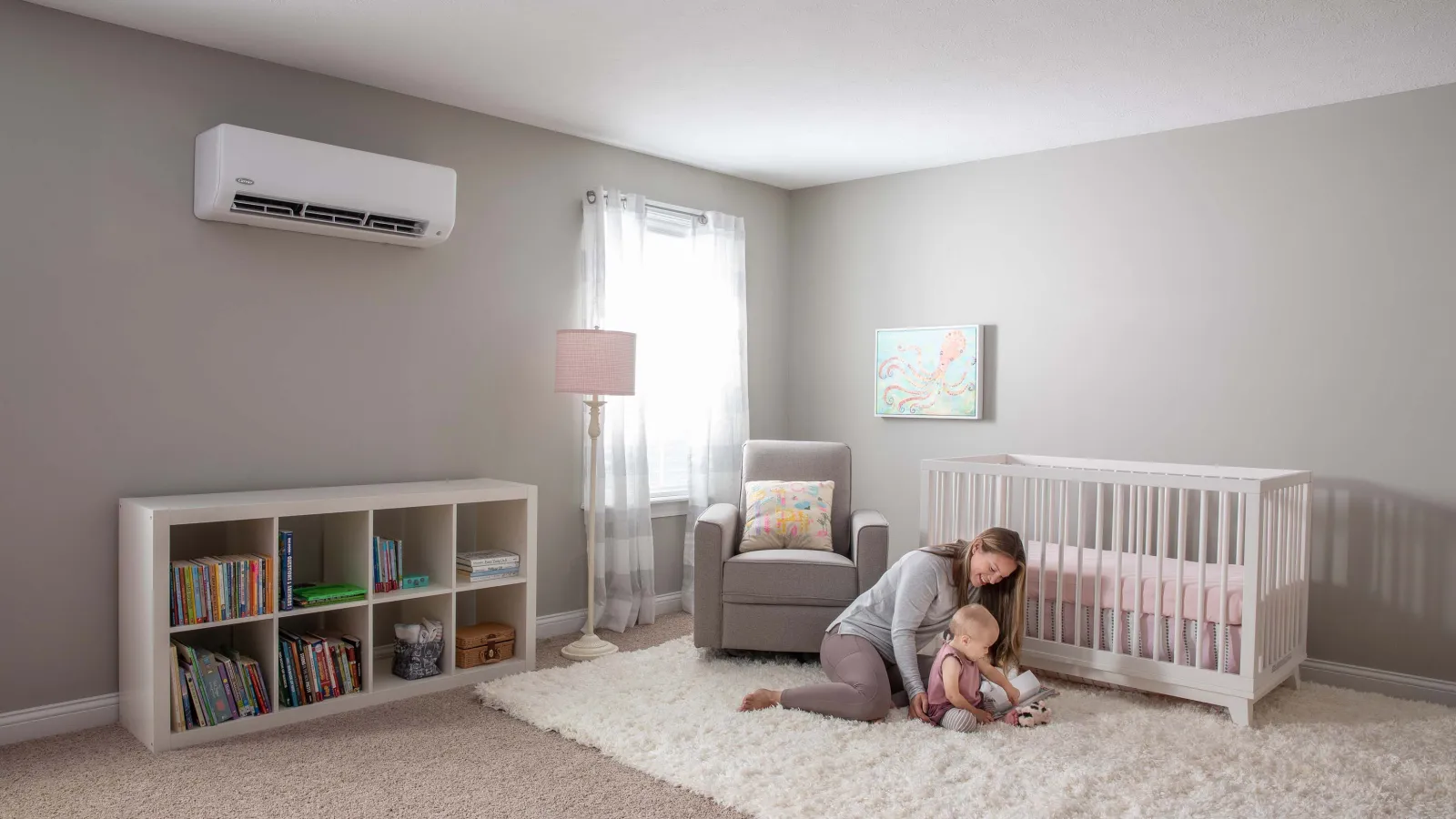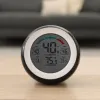For many homeowners, selecting and installing an air filter is a DIY exercise. We think that’s fine. After all, changing your air filter is a pretty easy thing to do.
But there’s a lot of controversy about air filters these days, in part because there are so many options for filtration. What’s the best air filter for you? It all depends on who you ask and what their priorities are.
The best air filter for your home depends on…
Several things. They include all of the following:
- Subjectivity: How much filtration seems like enough to you? If you feel like your air is sufficiently clean with a simple filter and you’re generally comfortable, air quality-wise, you might not need anything heavy-duty.
- Prioritization: Maybe you want to make sure you’re using an energy-efficient air filter (more on those in a sec), or perhaps you want to ensure your filtration system accounts for a particular component. VOCs, for instance. Your priorities will dictate which filter you select.
- Health concerns: Got allergies? Does mold bother you during the warmer months? Then you’ll need to use a filter that traps mold spores and pollen. On the other hand, maybe you’re not so sensitive and don’t need to go out of your way to filter those contaminants.
- Energy efficiency: Restrictive air filters can degrade the efficiency of your HVAC system, so you might need to find a balance between effective filtration and the efficient operation of your equipment.
- Operational integrity: In some cases, restrictive air filters can overwork your HVAC system and lead to premature equipment failure.
- Simplicity of maintenance: If you’ve forgotten to change your filter in the past, it might make sense to use filters that only require replacement or cleaning once or twice per year.
Whew! That’s a lot to keep in mind when selecting something as simple as an air filter. If you need help choosing the right air filter in your Atlanta area home, our team can help.
Confused? Fear not! We’re about to dive into air filtration options, give you a sense of what’s out there, and help you make an informed decision.
Know what you’re trying to filter
Some people are sensitive to VOCs. Others don’t care for the odor of animal dander. Pollen, mold, and dust aggravate some people’s allergies.
The bottom line? There are lots of things you might be trying to filter – or not.
Before you select an air filter, it’s a good idea to figure out your filtration priorities. The most common system for measuring the filtration capability of an air filter is known as MERV, or Minimum Efficiency Reporting Value. Low-MERV filters (think MERV 1-4) filter relatively few particles compared to high-MERV filters (think 11-16).
Depending on the type and density of the filter media, different filters can reduce or remove:
- Dust: This is the most basic contaminant that air filters seek to remove. Even the least powerful air filter will prevent a substantial amount of dust from entering your HVAC system and circulating throughout your home. (Usually MERV 1-4).
- Pollen, dust mites, and mold: Allergy sufferers should look for filters that trap these contaminants (usually MERV 5-8).
- VOCs: If you’re sensitive to strong odors from cleaning products, household items, or anything that off-gases into your home, look for filters that specifically remove odors and VOCs. Many will include a carbon layer to capture the odors (usually MERV 8-16).
- Bacteria: Now we’re getting into hospital-grade filtration. Some people need filters that can remove bacteria due to high sensitivity or because they have a chronic illness (usually MERV 13-17).
- Viruses: HEPA filters can usually remove viruses and other tiny particulates that slip by the media in other filters (usually MERV 15-20).
MERV values vary depending on the filter media type and size, and they’re not uniform across all brands and filter applications. So, one MERV 13 filter might filter bacteria while another doesn’t. It all depends.
For perspective, most 1″ filters that homeowners install themselves have MERV values between 6 and 12.
Choosing an air filter type
Here’s where things get interesting! Now that you know what you’re trying to filter and have a sense of what MERV range might get you there, it’s time to consider air filter type.
1″ pleated fiberglass filters
Everyone’s familiar with these, and you’ve probably dealt with them in one form or another. MERV values usually range from 4 to 14, and the filter packaging tells you what sort of contaminants the filter is capable of capturing.
But here’s the thing: We don’t like these filters. Especially not the high-MERV ones.
Why don’t we like them? Because they restrict airflow to your HVAC system. Pleated, high-MERV filters capture a lot of pollutants, but they also restrict the movement of air into your blower or furnace. As a result, the fan has to work harder to heat and cool your home, reducing efficiency. These filters can also cause liquid to flood back into the compressor, leading to premature equipment failure.
Basically, they increase static pressure within your HVAC system. That’s not good.
So, what should you do if you have a return grille filter system, or your ductwork can only accommodate a 1″ filter at the plenum? We recommend avoiding the high-MERV 1″ filters (above MERV 8 is pretty restrictive). The air filters we give our clients who have service agreements are 1″, non-pleated filters made of polyester media. These cover all the air filtration basics – dust and pollen removal, for example – without restricting airflow.
When you need better filtration than what a 1″ MERV 8 filter can provide, the best solution is to invest in…
Media filters
For many people, media filters are the best of both worlds: Serious filtration (MERV 11-16) without the airflow restrictions of 1″ filters. Great stuff!
A media filter lives between your return plenum and your furnace, so your system might require some retrofitting if you’re not already set up for one. They have more surface area than 1″ filters, which is why they enable better airflow. And you only have to replace them once per year.
Most media filters are what we call “low-pressure drop” filters, which means they have a minimal impact on your system’s static pressure. This is a good thing. It’s why media filters are such a great option for indoor air quality and overall HVAC efficiency!
Another thing that’s great about media filters: is coverage. Unlike most 1″ filters, they’re surrounded by a solid cabinet that prevents unwanted (and dirty!) air infiltration. A lot of 1″ filters aren’t effective because they allow air to go around the sides – so much for high MERV values, right?
HEPA filters
Usually packaged as a HEPA “system,” these filters are the best of the best. VOCs, bacteria, viruses… HEPA filters capture nearly everything. Technically speaking, they trap particles as small as 0.3 microns in diameter, which is ridiculously small.
For perspective, a single hair from your head is about 45 microns wide.
Since HEPA filters contain incredibly dense filtration media, they usually require an additional fan to push air through the filter. Your blower or furnace fan won’t be able to move enough air through the filter unassisted, which is why HEPA filters are usually installed as part of a system with an included fan.
Air filters are great, but they can’t fix everything.
We all need some level of air filtration. If nothing else, you want to filter out the dust so that your indoor HVAC equipment doesn’t get dirty.
But air filters can’t cure every indoor air quality problem. For example, an air filter can’t remove humidity from your home or prevent air infiltration from the outdoors. And if you’re installing one inside a duct system that’s already dirty, it’s not going to clean the pollutants that have already collected there. You’ll need to clean the ducts, too.
The same is true when it comes to energy efficiency. Upgrading to a media filter can reduce static pressure if you’re changing from, say… a 1″ pleated MERV 14 filter to a bona fide media filter. But your air filter won’t solve the “big picture” static pressure issues like duct sizing, duct restrictions, equipment sizing, and register/grille selection.
Then there’s this: If you’re not changing your filter according to the manufacturer’s instructions, you could be doing more harm than good. Dirty filters impose major restrictions on airflow, further impeding efficiency and speeding along the decline of your HVAC system.
Most 1″ filters are good for 90 days or so before you need to throw them away or wash them. Media filters typically require annual replacement, so there’s less maintenance.
The first step toward better indoor air quality, but not the last
Air filters are your first line of defense against contaminated indoor air. For some people, a simple filter is enough. Others need a more powerful filter. And many people require a solution beyond air filtration, like dehumidification, an ERV, or UV lights.
If we were in Arizona, humidity wouldn’t be the source of so many air quality issues. This isn’t Arizona, though. This is the hot, humid American South. A good filter is a good start. But in our climate zone, it’s rarely the end of the journey.
Just remember that indoor air quality is all about priorities, sensitivities, and the unique requirements of your home. Start with the filter. If that’s not sufficient, keep exploring.






